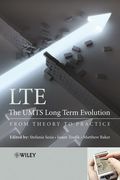Interesting result from the Dutch 2.6 GHz spectrum auction and one I have difficulties to interpret. Three incumbents and two newcomers have bid for the 2x 70 MHz of spectrum resulting in:
- one newcomer getting 2x 25 MHz
- the second newcomer getting 2x 20 MHz
- two incumbents each getting 2x 10 MHz
- one incumbent getting 2x 5 MHz
Lightreading's Michelle Donegan is the only one on the net I've seen so far writing a meaningful report about it and calling the stunningly low result of €2.6 million paid by the five “some loose change they [the network operators] found down the back of their car seats”.
According to Lightreading, a bandwidth cap was in place to prevent incumbents from bidding for all of the spectrum but I don't quite understand how much that was in practice. In any case the resulting spectrum the incumbents now have in 2.6 GHz seems very strange to me. Having 20 MHz is something you can build a fat carrier with and get speeds far beyond what is possible with HSPA today. But 10 MHz is an awfully small carrier for LTE in this band and I completely fail to see what you do with just 5 MHz!?
Also I haven't seen a country yet where 5 network operators have really made it over time. So instead of fighting it out over an auction, are some companies speculating with a merger down the road to get some fixed line or wireless assets and further spectrum in the 2.6 GHz band? Not sure if the auction rules allow for mergers later on but at least the money lost would be negligible in case the spectrum would have to be returned.

